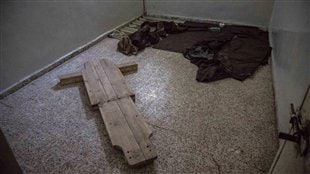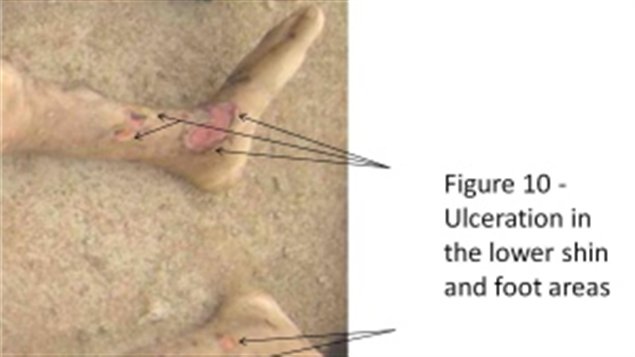Smuggled images of torture and killings may eventually lead to prosecution for war crimes, but for now, may only serve to draw attention to the Syrian conflict and the need for international players to take action to end it, says Kyle Matthews, a project director at the Montreal Institute for Genocide and Human Rights Studies at Concordia University in Montreal.
Former war crimes lawyers compared the images with the “industrial-scale” killing of Nazi death camps in a report they issued after examining the images supplied by a Syrian military defector. They carefully examined thousands of pictures of torture, strangulation, and execution to ensure they had not been doctored, and interviewed the defector who had worked as a military police photographer for 13 years.

“Absolute depravity”
“These photos convey the absolute depravity of the situation in Syria, the amount of human suffering that we’ve been aware through numbers, but it puts faces to these numbers. It puts faces to victims,” comments Matthews.
While the war crimes lawyers say there is good evidence the torture was committed by the Assad regime, Matthews says there has been abuse committed by many players in the conflict. There has also been concern about the reports neutrality given that it was partly funded by Qatar, which has offered support to opposition forces.
Photos need further attention
To confirm the reports findings a further investigation would have to be made by another body such as the International Criminal Court, suggests Matthews. However that is unlikely to occur because Syria never signed the convention which created the court.
It is also unlikely the UN Security Council would vote to investigate the photographic evidence since Russia has a permanent seat and has already blocked three measures against the Assad regime, says Matthews.
The photos however do conform with what human rights groups have observed and reported about atrocities being committed in Syria, he says, and they could initiate war crime prosecutions after the conflict abates.
For now, Matthews says, the photos may serve to draw world attention to the horrors of the Syrian conflict and create new political will on the part of the international community to try to end it.







For reasons beyond our control, and for an undetermined period of time, our comment section is now closed. However, our social networks remain open to your contributions.